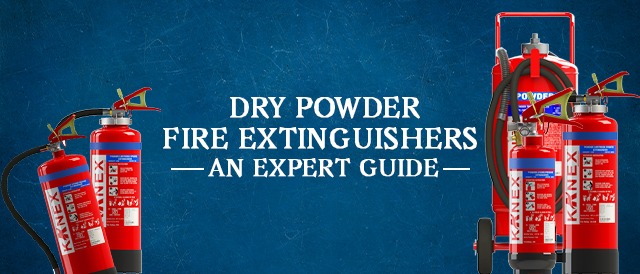Introduction:
A fire emergency can happen anytime, and being
prepared for it is important. One of the best ways to protect your home or
business from fire damage is to have a fire extinguisher on hand. However, with
so many types of fire extinguishers available, it can be challenging to know
which one is the best fit for your needs.
In this blog, we will focus on dry powder fire extinguishers, providing an expert guide to help you understand this type of
extinguisher and how to use it effectively.
A dry powder fire extinguisher is a type of fire
extinguisher that uses a dry chemical powder to put out a fire. The powder
extinguishes the fire by separating the fuel from the oxygen in the air, which
is essential to keep the fire burning. The powder also has a cooling effect,
which helps to lower the temperature of the fuel, making it less likely to
reignite.
What types of fires are dry powder extinguishers
suitable for?
Dry powder fire extinguishers are versatile and can be
used on a variety of fires. Although extremely versatile ABC powder fire extinguishers or BC Fire Extinguishers are not a “catch-all” solution, Dry
powder fire extinguishers are an excellent choice for homes and businesses.
They work best on Class A, B, and C fires.
It is important to note that dry powder fire
extinguishers are unsuitable for fires involving cooking oil or fat, as the
powder can spread the flames, making the fire worse.
How should a dry powder fire extinguisher be used?
It is essential to follow the correct procedure to
ensure that the fire is extinguished safely and effectively. Here are the steps
to follow:
- Pull the pin at the top of the extinguisher. This will break the
seal and allow you to discharge the powder.
- Direct the extinguisher's nozzle at the base of the fire. This will
aid in suffocating the fire and preventing it from spreading.
- Squeeze the handle to discharge the powder onto the fire. Keep the
extinguisher upright while doing this, as tilting it can cause the powder
to clog.
- Sweep the extinguisher from side to side, covering the entire area
of the fire. Continue until the fire is out, and then keep an eye on the
area to ensure it does not reignite.
Remember that dry powder fire extinguishers can be
messy, and the powder can cause damage to electrical equipment. Therefore, it
is essential to use them only as a last resort and to call the fire department
if the fire is not easily extinguished.
How do you maintain a dry powder fire extinguisher?
Here are some tips for maintaining your dry powder
fire extinguisher:
- Check the pressure gauge regularly to ensure that the extinguisher
is still charged.
- Shake the extinguisher every few months to prevent the powder from
settling and clogging the nozzle.
- Inspect the extinguisher for damage or corrosion, and replace it if
necessary.
- Store the extinguisher in a cool, dry place, away from heat sources.
Conclusion:
 Reviewed by Kanex Fire
on
April 08, 2023
Rating:
Reviewed by Kanex Fire
on
April 08, 2023
Rating:













No comments: